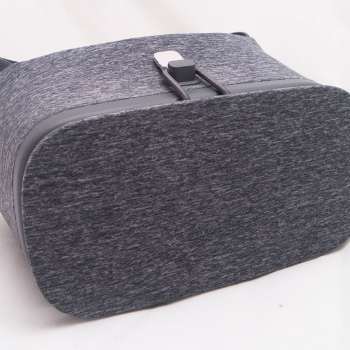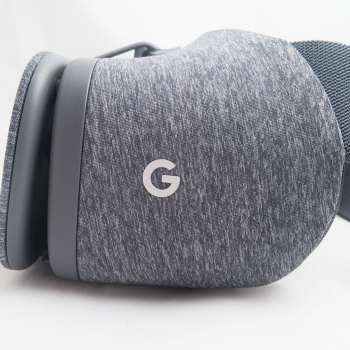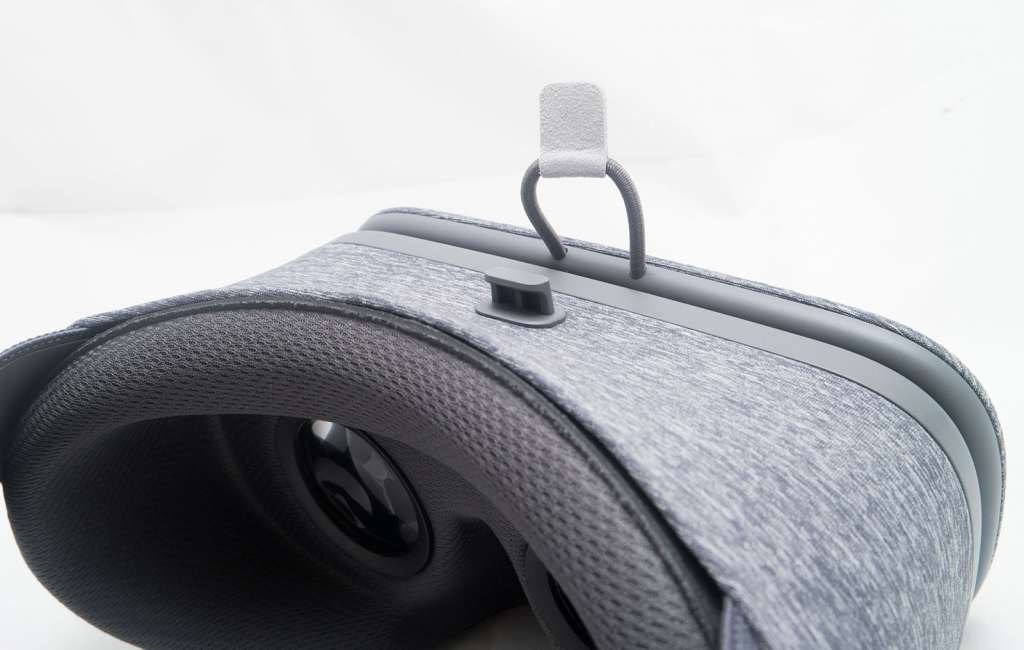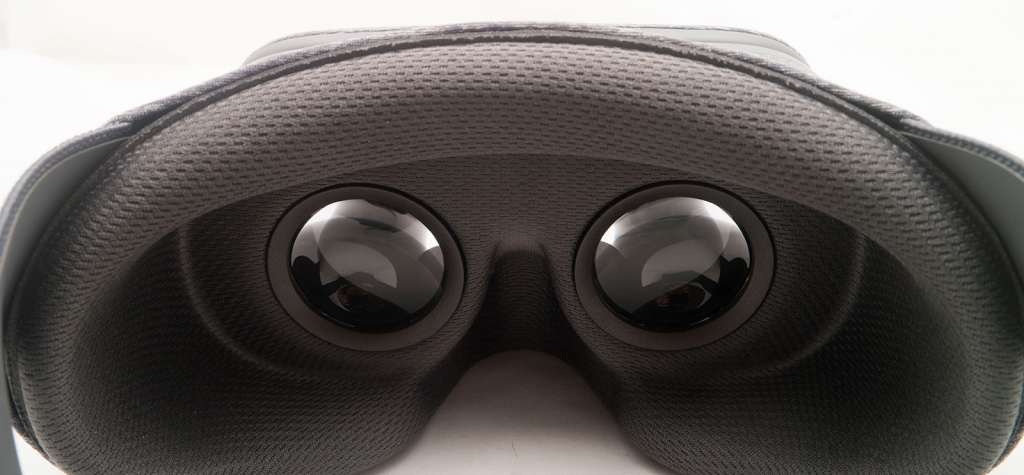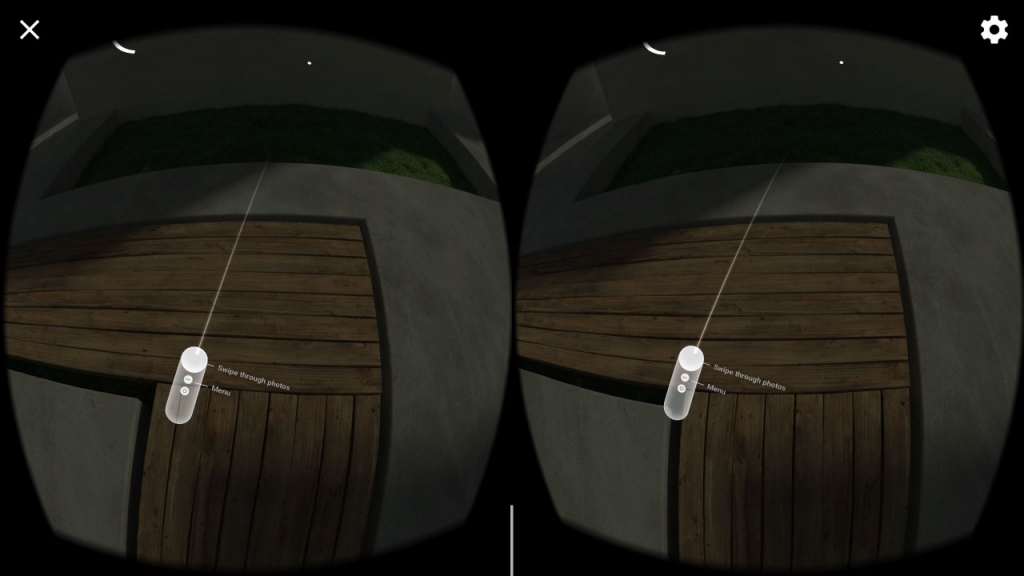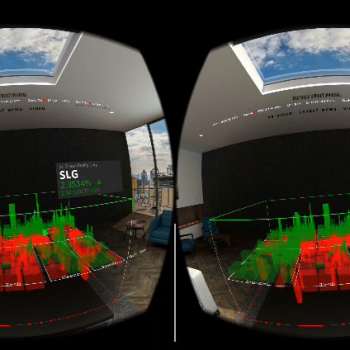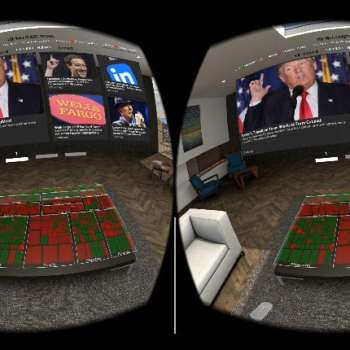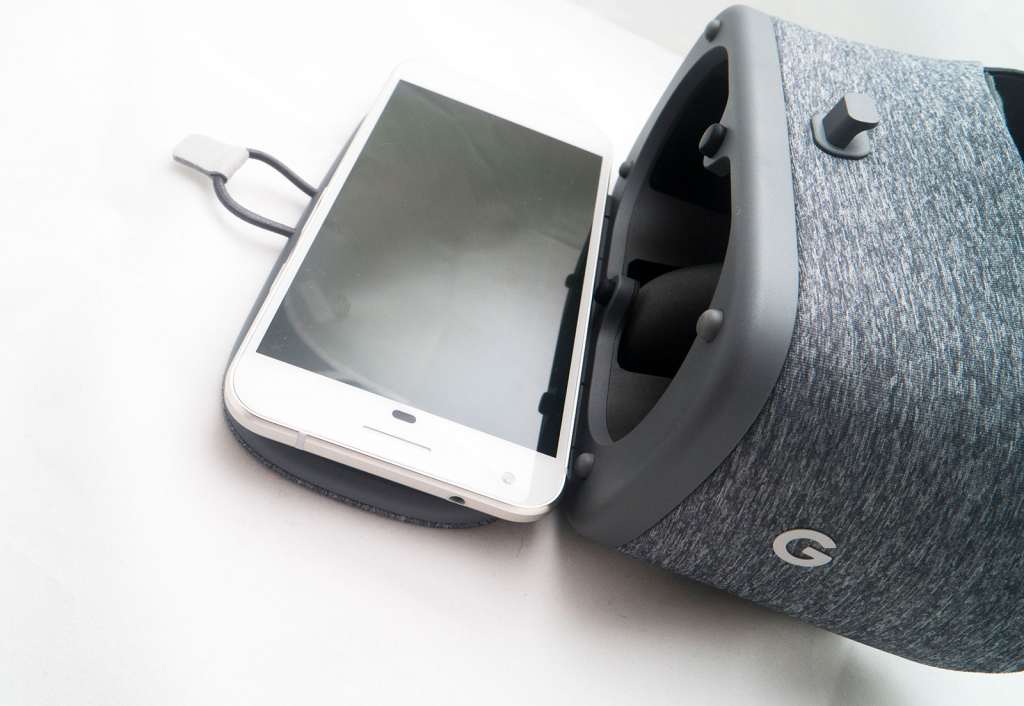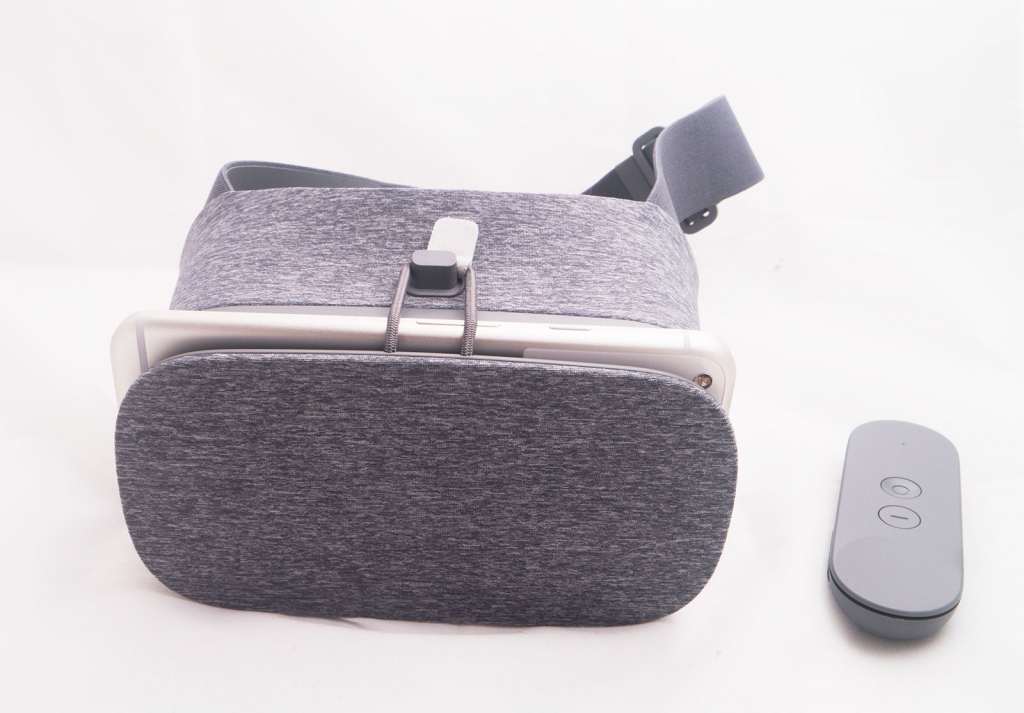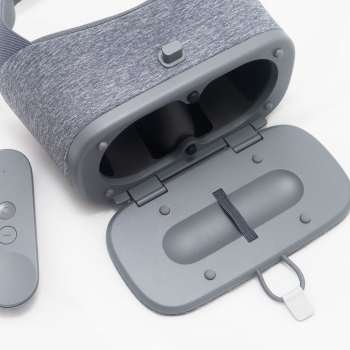Quick review
The good
The not-so-good
There’s no stopping the next form of entertainment, as virtual reality arrives in another device. This time, it’s Google’s Pixel and Pixel XL, demonstrating the first generation of Daydream VR.
Features and design
A little different from the standard virtual reality headsets, Google’s Daydream View VR headset doesn’t take the same plastic design everyone uses.
It might sound strange to say “standard virtual reality headsets” as the area just begins to take off, but for the most part, there is a general template: a basic plastic box with a tray in the back that can fit phones sized from 4.7 inches all the way to the 6 inch phablet, with two sets of plastic or glass lenses looking in on the phone screen behind it like binoculars made just for smartphones.
That’s how most headsets look, and for the most part, even the Daydream offers this concept, deviating slightly in the design thanks to the use of soft materials that feel more like clothing, almost like a sweater has been wrapped around that “standard virtual reality headset”.
While the design is definitely a little more comfortable, there’s no doubting that Google has been inspired by its older “Cardboard” headsets in Daydream, with a flap that opens up at the back to let you insert a smartphone into the right space.
To make it a little different and more useful, Google has put magnets on each side of that space to help align the phone properly, telling the headset where the screens are and essentially doing the math by aligning the display appropriately for your eyes.
Forget needing to position it just right because these magnets and the software will cut the guesswork from the equation, realigning the image based on where you’ve put the phone, within reason of course.
Only two phones will fit into the Daydream at the time of publishing, with only the Google Pixel and Google Pixel XL handsets qualifying for this VR headset. To make it work, simply slide these into the headset’s cavity where the phones will pick up on what you’re doing and should switch you into the right app first and foremost.
Closing up the headset, Google’s Daydream locks the phone and the rear cover into place by locking a small piece of elastic over a peg, essentially acting as the new form velcro that was previously used on Google Cardboard, which is what Daydream essentially evolves.
Thanks to the space being still open at the top and the bottom, you are free to charge the phone and plug in a pair of headphones.
We need to note that the fit for the headset isn’t necessarily the best, even if the comfort is, with the headset not always adapting to the bridge of the nose and held in place only with one strap. As such, you may find a bit of glare gets into the short scope where your eyes go, reflecting off the lenses when the title is a bit dark or in the middle of a loading system.
For that, we want to say move to a place in the home where the light isn’t behind you, as right now, that’s the best way to ensure total immersion.
The remote
Easily the most impressive part of the package, the Google Daydream remote really is the point of difference that makes the headset far more interesting than other mobile VR headsets we’ve played with.
Don’t get us wrong, because we love the Samsung Gear VR and pretty much carry it where ever we go (we’re serious, by the way), but the Daydream offers something Samsung’s headset can’t: true interactivity.
Both offer a sense of immersion, as your eyes take on what is sent their way courtesy of split-screen trickery while the combination of a compass, gyroscope and accelerometer tells the phone where to position your body in 3D space, a technical way of saying your mobile turns you into a controller.
However only the Google Daydream lets you put your hand into the virtual world by way of a Bluetooth remote that talks to the phone.
It seems so simple, but this small controller sized just for your hand changes everything, providing what is basically the sensor package from a small smartphone inside a remote control.
Load up any app or game made for Daydream and one of the first things you’ll see when you wave your hand is that remote, there when you look down regardless of if you’ve set the remote to appear in your left hand or your right (the latter of which it defaults to first).
Many of the apps made to work with Google’s Daydream remote will almost act like a fishing line, with a long line protruding from the remote and allowing you to point at parts of the app to select things, such as is the case with Google’s Street View, using the dots in the world to navigate to more of the location.
Not all work this way, however, with the Daydream remote also being a pointing device, interpreting the direction to where you’re pointing in real life into on-screen positions for a graticule (reticle).
Some games even turn the remote into gaming controllers, and one such title — VR Karts — had us flip the controller on its side and use it much like we did with the old Nintendo Wii, steering with the controller’s sensors picking up on left and right driving motions.
It’s not even just a gesture remote, with a touchpad built into the main button at the top of the controller, able to pick up on where your finger touches, seen best in Google’s “Arts & Culture VR”, which when you look down at your remote will pick up on finger placement on the controller to reveal where you’re touching the remote, using this as a sort of in-VR mouse of sorts, which is really what it is.
All apps made for Daydream will take advantage of this in some way, and that really is one of the main reasons for using the platform, as it offers a way to actually connect with the experiences offered.
That’s already one of the downsides of current mobile virtual reality environments, with the majority of these being relatively passive experiences. Sure, some of them have controls on the side of the headset and others can connect directly with Bluetooth game pads for a thoroughly disconnected gaming experience, but with the Google Daydream View VR remote, you’re given the best chance to make it appear as if your hand and the motions it controls can appear inside of a game.
Before the Daydream, that sort of thing was only responsible if you were tethered to a desktop, but with the Google Daydream View, we’re seeing something that really has the potential to make VR mainstream.
In-use
Like Cardboard, when you’re ready to get into virtual reality, you simply need to either run the app that is Daydream-based or stick the phone into that section at the back of the headset and a Daydream-compatible phone will do the rest, the magnets kicking in and telling the phone what to do and what to show in the right spot.
It’s a little different from Samsung’s Gear VR platform which has you plugging the phone into a connector built into the headset to kick-start the VR system. Rather, this is more of a trigger like when Near-Field Communication hotspots are built into phones or cameras, with the magnets inside the headset — the little bumps found on the inside of the Daydream headset — telling the phone that it’s time to load up the VR interface.
If you’ve never used the Daydream before, there is a little tutorial that takes place in a forest you can’t get out of, and then a quick tour of some of the things you can do with the motion controls and remote inside of a small museum.
Once you’ve finished this, you can get stuck into the little amount of content that there is, and while the amount is small, what’s there seems to be very good and very interactive.
Take Google’s “StreetView”, an application that has never officially graced a VR platform but really feels like it should have. We’ve all used this before, with StreetView providing a first-person Google Maps experience shot by those awesome little Google Cars driving around the place.
In StreetView VR, you can now walk around cities, towns, landmarks, and even go snorkeling by jumping to and from each point in the path, using the remote as a sort of fishing line to snag the next target in the path and then clicking the button.
Is it as seamless as walking in the spot? Probably not, but given that Google StreetView isn’t an encapsulated world and you’re basically jumping from one 360 degree image to the other, this method makes sense, and provides what is easily the most relatable demonstration.
Testing it on our peers, their faces light up, with many saying “this is the coolest thing ever”, followed by mouths that just open up in awe.
In a way, it’s like travelling to your favourite destination but without needing to go anywhere, and makes Google’s already excellent StreetView project just that much more brilliant.
It’s not alone, either, and is joined by the Wall Street Journal’s own VR application, an intriguing idea that turns the website and publication’s feed into a New York City apartment with stunning views, the latest headlines, a smattering of 360 degree videos, and a 3D interpretation of what the stock market is presently doing.
Google’s aforementioned “Arts & Culture VR” is too a neat project that showcases what the headset can really do, establishing itself as a sort of time capsule for the world’s greatest works of art.
Essentially, this is a private gallery able to load art from Google’s servers, all captured in stunning detail and allowing you to get as close as close can be to the works, even more so than if you had viewed it in person.
In some ways, this changed the impact simply because you’re not getting the right size and dimensionality of the artworks. On the other hand, you can get right into the image and view each brush stroke and each crack from age, seeing more of the art than you’ve ever imagined, and potentially exploring more than a gallery would ever allow you to see.
There are also entertainment experiences, too, such as video games that let you explore, race, and build, while movies and TV shows can be watched in Google Play Movies & TV, and YouTube arrives with its own VR interface.
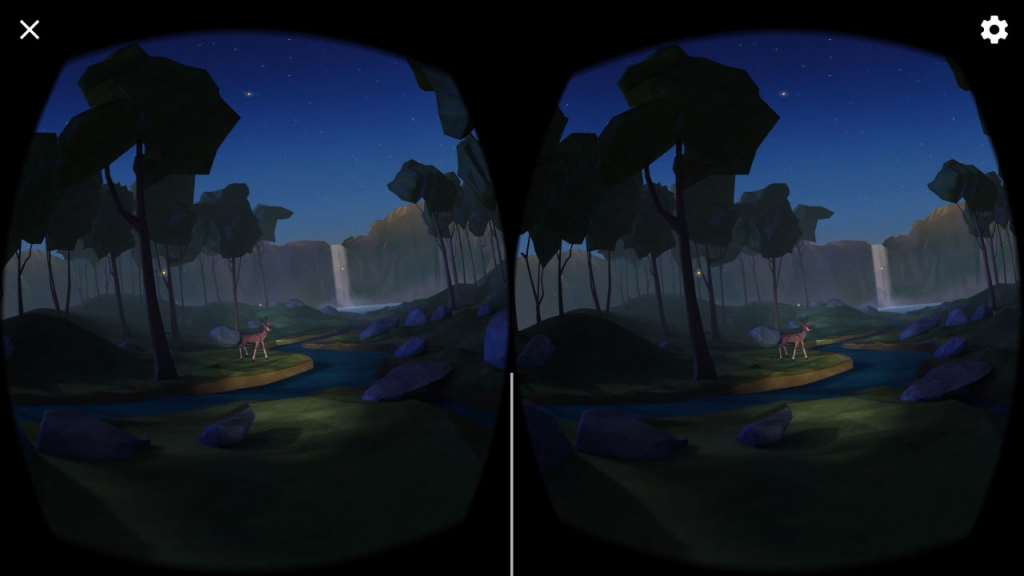
What needs work
Overall, it’s hard not to be impressed by what Google has created in the Daydream View VR, with a system that goes beyond the standard 360 degree headset experience, attempting to bridge the hand and make it cross the digital stream, allowing you to use a method of control within virtual reality. That’s something no mobile system outside of the $4600 Microsoft Hololens has accomplished, and is a pretty big deal.
Without this feature, Daydream VR is just another 360 degree headset, and a fabric take on the $5 paper-based Google Cardboard headset we’ve all become familiar with.
That said, while it’s a clearly well thought out concept, it does come with its fair share of bugs.
Whether in beta or in day one (and there doesn’t appear to be much difference between the two), we’ve seen the apps crashed out every so often to the desktop forcing you to take the phone out and exit the app, or even make one of Google’s notifications drop down and sit there mid-game again forcing you to take the phone out and exit the app.
Even if you don’t experience that many bugs, there’s no doubting how hot the Pixel phone handset gets while playing with virtual reality in Daydream, and this is really impossible to avoid.
Something that could probably be ironed out later on with subsequent patches (or just new hardware altogether), Daydream turns up the screen brightness and runs the processing technology pretty hard, more or less giving the phone a solid work lout.
That can cause the Google Pixel phone to heat up pretty quickly, and while you won’t necessarily feel the heat by holding the phone (because it’s strapped to your face), you can feel the heat from the eyepiece, as the warmth bathes the back of the glass lenses which in turn heats up the front.
It’s not enough to burn your eyeballs, but it’s definitely noticeable, and brings to light a problem that affected Samsung in its Note 4 and S6 variant of the Gear VR, something the liquid-cooled S7 and S7 Edge made a better attempt with.
This technically means Samsung’s mobile VR option handles heat marginally better, though both can get very, very toasty.
As a result, here’s your pro-tip: take the phone out of the Daydream headset every so often just so you’re not left with an overheating phone against a pair of lenses.
Your other pro-tip is simple, and it’s one that makes the Google daydream a rather expensive mobile VR headset, and it’s this: you can only use a Google Pixel phone.
Despite Google hinting earlier on that its Nexus 6P would work with the Daydream headset, the software is not designed to work with any other phone outside of the Pixel or Pixel XL phones.
By themselves, the Pixel and Pixel XL fetch starting prices of $1079 and $1229 respectively, while the Daydream headset itself retails for $119.
Technically that makes the Daydream a less expensive headset than the $159 Samsung Gear VR, but the catch is that you have to have the Pixel or Pixel XL phone to play, while Samsung’s S6, S6 Edge, and Note 5 phones can all still be found for far less, as can the S7 and S7 Edge.
We need to note that the two headsets are different, and because of the age of these concepts, they also have different content libraries, with Samsung’s Gear VR easily having more available to it at this present time, which is really the final problem with Google’s Daydream, because really it just needs more stuff.
At launch, it has but a handful of apps and games, and while that will likely change by early next year, you may need to wait some time before Netflix, Stan, and other media services make their way to the platform beyond that of Google’s own.
Hey, we’d love to see some productivity apps and more games, and we suspect we’re not alone in this regard.
Final thoughts (TLDR)
No stranger to virtual reality, Google’s second attempt is a proper fully fledged concept that feels much better than the $5 Cardboard idea that really set mobile VR into motion.
More than just a 360 degree viewer, the introduction of the remote gives viewers a way to actually connect with what’s happening on screen and in their own world, providing a greater depth and introduction to virtual reality than most will see with the basic headsets.
That’s not to say Google’s Daydream is better than Samsung Gear VR, but rather different.
Both are very capable mobile VR platforms, delivering a different type of experience. Samsung’s Gear VR feels more entertainment focused at this time, and while it’s a 360 degree viewer with a few controls on the right side of the headset, the fit still feels better and the scope of view wider to put you more into the action, plus there’s more content for the Gear VR which has been around far, far longer.
On the other hand, Google’s Daydream VR is just beginning, so its content cup is a little less full at the moment, but what does exist mostly takes advantage of its unique concept. In summary, Google’s Daydream View takes mobile VR further than the norm thanks to what it does.
Both the Samsung Gear VR and Google Daydream are great mobile VR concepts all up, but we’d say right now that if you like the feeling that VR could be more interactive, the Daydream is the headset for you. Just make sure you have a Google Pixel handset, because right now, it’s the only way in.



